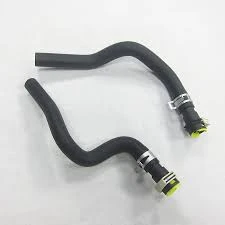Understanding the Importance of Steering Pump Seals in Vehicle Performance and Maintenance
Understanding Steering Pump Seals Importance, Function, and Maintenance
The steering pump seal is a critical component of a vehicle’s steering system, specifically in hydraulic power steering systems. These seals are designed to contain hydraulic fluid within the power steering pump, preventing leaks and ensuring that the steering system operates smoothly and efficiently. Understanding the importance, function, and maintenance of steering pump seals can help vehicle owners keep their steering systems in optimal condition.
Importance of Steering Pump Seals
The primary role of the steering pump seal is to maintain hydraulic pressure within the steering system. This pressure is essential for providing the necessary assistance to the driver when turning the steering wheel. A well-functioning steering pump seal helps facilitate the smooth flow of hydraulic fluid, allowing for easier maneuverability and enhanced control over the vehicle.
Additionally, steering pump seals play a crucial role in preventing contamination
. If hydraulic fluid leaks due to a faulty seal, it can introduce air and dirt into the steering system, which may lead to increased wear and tear on components and potential system failure. Therefore, a functioning seal is essential not only for hydraulic pressure maintenance but also for the overall longevity of the steering system.Function of Steering Pump Seals
Steering pump seals are typically made from durable materials that can withstand the harsh conditions present in the automotive environment. They are designed to cope with both heat and pressure while providing a reliable barrier against leaks. These seals create a tight fit around the moving parts of the pump, such as the rotor and housing, ensuring hydraulic fluid remains contained within the system.
steering pump seal

In operation, when the driver turns the steering wheel, the pump is activated, circulating hydraulic fluid through the system. The seal's effectiveness determines how well the pressure is maintained during this process. If the seal is compromised, the pump may struggle to maintain pressure, leading to a heavier and less responsive steering feel.
Maintenance and Replacement of Steering Pump Seals
Regular maintenance is essential for ensuring the longevity and effectiveness of steering pump seals. Vehicle owners should routinely check for signs of leakage around the steering pump and assess fluid levels. Dark, dirty, or low hydraulic fluid could indicate that the seals are failing, necessitating inspection and potential replacement.
If a leak is detected, it's crucial to address the issue promptly. Ignoring a failing steering pump seal can lead to more significant problems, such as the need for a complete pump replacement, which can be costly. When replacing a faulty seal, it is often advisable to replace the entire steering pump, as wear may affect other components and lead to premature failure.
Professional service technicians typically handle seal replacements, as they have the necessary tools and expertise to perform the work correctly. They ensure that the new seal is installed properly, preventing any future leaks and restoring the steering system to its full functionality.
Conclusion
In conclusion, steering pump seals are vital components that significantly affect the performance and safety of a vehicle’s steering system. Regular maintenance, timely replacement, and proper fluid management are key to ensuring these seals operate effectively. By understanding their importance, function, and care, vehicle owners can take proactive steps to maintain their steering systems, ultimately enhancing their driving experience and prolonging the life of their vehicles.
-
The Ultimate Guide to Boat Propeller Bearings and Trailer Wheel Bearings
News Jul.31,2025
-
The Essential Guide to Marine Bearings and Boat Trailer Wheel Bearings
News Jul.31,2025
-
The Complete Guide to Heavy Duty Seals: Protecting Doors and Spaces Efficiently
News Jul.31,2025
-
Essential Guide to Marine Shaft Bearings and Boat Trailer Axle Bearings
News Jul.31,2025
-
Comprehensive Guide to Marine and Trailer Bearings for Safe Boating and Transport
News Jul.31,2025
-
Comprehensive Guide to Automotive Oil Seals: Protecting Your Engine and Shafts
News Jul.31,2025
-
Understanding Automotive Oil Seals: Essential Components for Engine and Shaft Protection
News Jul.30,2025
Products categories















